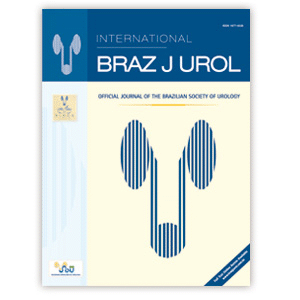INTRODUCTION
Vesicorectal fistula is a devastating postoperative complication after radical prostatectomy. Definitive treatment is difficult. Despite many options, currently there is not one universally accepted approach.
OBJECTIVES
We describe two new minimally invasive approaches for the repair of vesicorectal fistula.
METHODS
We treat two patients with vesicorectal fistula after radical prostatectomy. In the first case, we perform the repair using Transanal Minimally Invasive Surgery (TAMIS) with standard laparoscopic instrumentation. We use Alexis device for transanal access, one rigid 10mm port for 0 degress endoscope and two minilap 3mm ports for surgical manipulation. The surgical steps were: Cystoscopy and implant of guide wire on fistula; Positioning; Transanal access; Identification of the fistula; Dissection; Closure of vesical wall; Injection of fibrin glue in the defect; Closure of rectal wall. In the second case, we perform the repair using Transvesicoscopic Surgery. We use one rigid 10mm port for 0 degress endoscope and two 5mm ports for surgical manipulation. The surgical steps were: Positioning; Transvesical access; Identification of the fistula; Dissection; Closure of rectal wall; Closure of vesical wall.
RESULTS
Mean operation time was 225 minutes, with a time of surgery slightly higher in TAMIS. The time of dissection was similar (120 minutes). No perioperative complications and conversion were observed. Hospital stay was 2 days and the catheters were removed at 4 weeks. No recurrence was observed.
CONCLUSIONS
The greatest difficulties were maintaining luminal dilation, instrumental manipulation and suturing. Nevertheless, these new approaches are feasible, with low morbidity.
Editorial comment
The video by Machado and colleagues nicely depicts two different minimally invasive approaches for the treatment of rectovesical fistulae. Repair of these fistulae can be quite challenging, especially if the defect is large or if the tissues were previously irradiated. Transanal surgeries are becoming more widespread as equipment and surgeons’ experience has improved (11 . Kunitake H, Abbas MA: Transanal endoscopic microsurgery for rectal tumors: a review. Perm J. 2012; 16: 45-50.). Transvesical surgery has slowly been adopted for various conditions including simple prostatectomy, vesicovaginal fistula repair and ureteral reimplantation (22 . Gözen AS, Teber D, Moazin M, Rassweiler J: Laparoscopic transvesical urethrorectal fistula repair: a new technique. Urology. 2006; 67: 833-6.). Endoscopic treatment of a rectovesical fistula was reported in 2010 using small clips and tissue glue (33 . Mangiavillano B, Pisani A, Viaggi P, Arena M, Opocher E, Mangano M, et al.: Endoscopic sealing of a rectovesical fistula with a combination of an over the scope clip and cyano-acrylate injection. J Gastrointest Oncol. 2010; 1: 122-4.). The potential benefits of these less invasive approaches include less pain and shorter recovery. These new techniques must be compared to traditional surgery and we look forward to additional reports from the authors (44 . Hadley DA, Southwick A, Middleton RG: York-Mason procedure for repair of recto-urinary fistulae: a 40-year experience. BJU Int. 2012; 109: 1095-8.).
Hubert Swana, MD
Pediatric Urology
Nemours Children’s Hospital Orlando
Orlando, FL, USA
E-mail: hswana@nemours.org
REFERENCES
-
1Kunitake H, Abbas MA: Transanal endoscopic microsurgery for rectal tumors: a review. Perm J. 2012; 16: 45-50.
-
2Gözen AS, Teber D, Moazin M, Rassweiler J: Laparoscopic transvesical urethrorectal fistula repair: a new technique. Urology. 2006; 67: 833-6.
-
3Mangiavillano B, Pisani A, Viaggi P, Arena M, Opocher E, Mangano M, et al.: Endoscopic sealing of a rectovesical fistula with a combination of an over the scope clip and cyano-acrylate injection. J Gastrointest Oncol. 2010; 1: 122-4.
-
4Hadley DA, Southwick A, Middleton RG: York-Mason procedure for repair of recto-urinary fistulae: a 40-year experience. BJU Int. 2012; 109: 1095-8.
Publication Dates
-
Publication in this collection
Mar-Apr 2014
History
-
Received
01 Dec 2013 -
Accepted
30 Jan 2014

